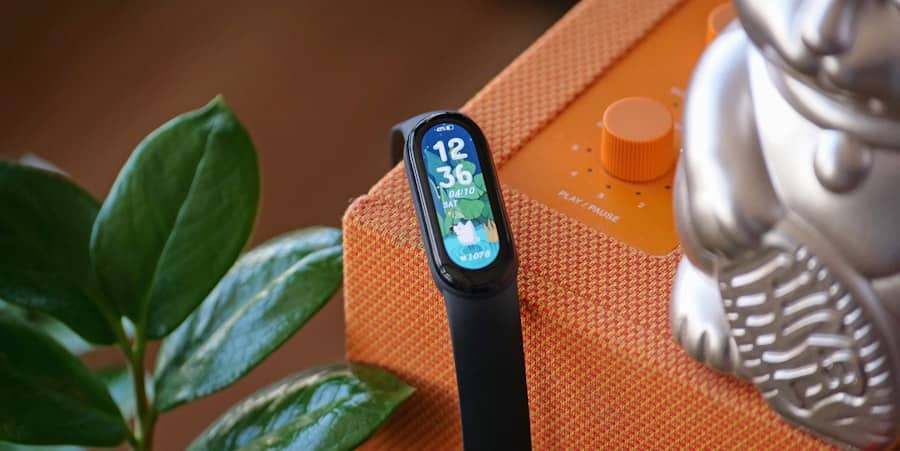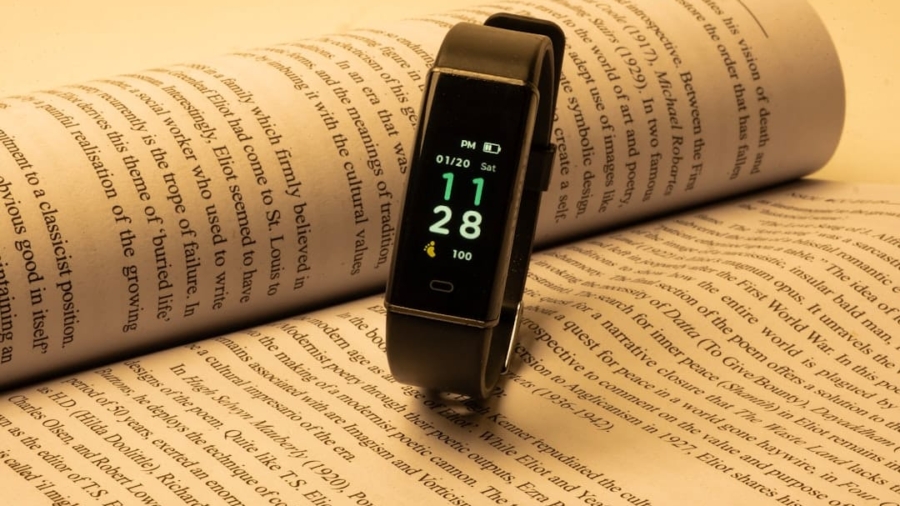Wearable technology has emerged as a transformative force in the realm of sports, revolutionizing how athletes train, compete, and recover. These devices, which include smartwatches, fitness trackers, heart rate monitors, and specialized sensors, are designed to be worn on the body, providing real-time data and insights into an athlete’s performance and health metrics. The integration of technology into sports is not merely a trend; it represents a significant shift towards data-driven training methodologies that can enhance athletic performance and reduce the risk of injury.
The evolution of wearable technology in sports can be traced back to the early days of heart rate monitors, which were primarily used by endurance athletes to gauge their exertion levels. However, advancements in sensor technology, data analytics, and connectivity have led to the development of sophisticated devices that can track a wide array of metrics, including speed, distance, cadence, sleep quality, and even biomechanical movements. As athletes and coaches increasingly recognize the value of data in optimizing performance, the adoption of wearables has surged across various sports disciplines, from running and cycling to team sports like soccer and basketball.
Key Takeaways
- Wearable technology provides real-time data to enhance athletic training and performance.
- Athletes benefit from wearables through improved monitoring of health metrics and injury prevention.
- Case studies show significant performance gains when athletes integrate wearables into their routines.
- Challenges include data accuracy, privacy concerns, and device comfort during intense activity.
- The future of wearables in sports points to more advanced, personalized training tools for peak performance.
Benefits of Wearables for Athletes
The benefits of wearable technology for athletes are manifold, encompassing aspects of training, recovery, and overall health management. One of the most significant advantages is the ability to monitor physiological parameters in real-time. For instance, heart rate variability (HRV) is a critical metric that can indicate an athlete’s recovery status and readiness for training.
By analyzing HRV data collected through wearables, athletes can make informed decisions about when to push harder or when to take a step back to avoid overtraining. Moreover, wearables facilitate personalized training regimens tailored to an athlete’s unique physiological responses. For example, a runner can use GPS-enabled devices to track their pace and distance while receiving feedback on their running form through accelerometers.
This data allows coaches to adjust training plans based on individual performance trends, ensuring that athletes are training at optimal intensities for their specific goals. Additionally, wearables can help athletes set realistic benchmarks and track their progress over time, fostering motivation and accountability.
Case Study: Athletes Using Wearables for Training

A compelling case study illustrating the impact of wearable technology in sports is that of professional soccer players who utilize GPS tracking devices during training sessions and matches. Clubs like FC Barcelona and Manchester City have integrated these technologies into their training regimens to monitor player movements, workload, and fatigue levels. By analyzing the data collected from these devices, coaches can assess how much distance players cover during games and training sessions, as well as their sprinting frequency and intensity.
For instance, during a typical training session, a player might wear a GPS vest that tracks their position on the field. The data collected can reveal insights into their heat maps—areas where they spend the most time—and help identify patterns in their movement that may lead to injury. If a player consistently shows signs of excessive fatigue or overexertion in certain areas, coaches can modify their training load or adjust tactics to mitigate injury risks.
This proactive approach not only enhances player performance but also contributes to longer careers by reducing the likelihood of injuries.
Impact of Wearables on Performance Improvement
The impact of wearable technology on performance improvement is profound and multifaceted. By providing athletes with access to real-time data, wearables enable them to make immediate adjustments to their training strategies. For example, a cyclist using a power meter can monitor their output in watts during a ride.
This information allows them to gauge their effort levels accurately and adjust their pacing accordingly during races or training sessions. Furthermore, wearables can enhance recovery strategies by tracking sleep patterns and stress levels. Athletes who understand how their bodies respond to training loads can optimize their recovery protocols by incorporating rest days or active recovery sessions based on data-driven insights.
For instance, a swimmer might use a sleep tracker to ensure they are getting adequate rest before a major competition. By correlating sleep quality with performance metrics, they can identify the optimal amount of rest needed for peak performance.
Challenges and Limitations of Wearable Technology in Sports
Despite the numerous advantages of wearable technology in sports, several challenges and limitations persist. One significant concern is the accuracy and reliability of the data collected by these devices. While many wearables are equipped with advanced sensors capable of measuring various metrics, discrepancies can arise due to factors such as device calibration or environmental conditions.
For instance, GPS accuracy may be compromised in urban areas with tall buildings or dense tree cover, leading to unreliable distance measurements for runners or cyclists. Another challenge is the potential for information overload. With an abundance of data available at an athlete’s fingertips, there is a risk that they may become overwhelmed by the sheer volume of metrics being tracked.
This can lead to confusion regarding which data points are most relevant for their training goals. Additionally, athletes may struggle with interpreting complex data without proper guidance from coaches or sports scientists. Therefore, it is crucial for athletes to work closely with knowledgeable professionals who can help them navigate the intricacies of wearable technology.
Future of Wearables in Athletic Training

The future of wearable technology in athletic training is poised for further innovation as advancements in artificial intelligence (AI) and machine learning continue to evolve. These technologies have the potential to enhance data analysis capabilities significantly, allowing for more sophisticated insights into an athlete’s performance patterns.
Moreover, the integration of wearables with other emerging technologies such as virtual reality (VR) and augmented reality (AR) could create immersive training experiences that enhance skill development. Imagine a basketball player using AR glasses that overlay performance metrics during practice sessions or a football player receiving real-time feedback on their technique through VR simulations. Such innovations could revolutionize how athletes train by providing immediate feedback in dynamic environments.
Recommendations for Athletes Using Wearables
For athletes looking to maximize the benefits of wearable technology, several recommendations can enhance their experience and effectiveness. First and foremost, it is essential to choose devices that align with specific training goals and sports disciplines. Athletes should consider factors such as battery life, comfort, and compatibility with other devices when selecting wearables.
Additionally, establishing clear objectives for using wearables is crucial. Athletes should identify which metrics are most relevant to their performance goals—whether it be heart rate monitoring for endurance training or power output for strength training—and focus on those areas.
Finally, athletes should prioritize education on how to interpret the data collected by their wearables effectively. Engaging with resources such as workshops or online courses can empower athletes to understand the significance of various metrics and how they relate to performance outcomes. This knowledge will enable them to leverage wearable technology as a powerful tool in their pursuit of excellence.
The Role of Wearables in Achieving Peak Performance
Wearable technology has undeniably become an integral part of modern athletic training, offering unprecedented opportunities for performance enhancement and injury prevention. As athletes continue to embrace these innovations, the landscape of sports will evolve further towards data-driven methodologies that prioritize individual needs and optimize training outcomes. The journey towards peak performance is no longer solely reliant on traditional coaching methods; it is now augmented by the insights provided by wearable devices that empower athletes to reach new heights in their respective sports.
In exploring the impact of technology on athletic performance, the case study on athletes using wearables for peak performance highlights the innovative ways in which these devices can enhance training and recovery. For those interested in further optimizing their content related to technology and performance, a related article on SEO and NLP optimization can provide valuable insights. You can read more about it in this article: Boost Your Content with NeuronWriter SEO & NLP Optimization.
FAQs
What types of wearables are commonly used by athletes for peak performance?
Athletes commonly use wearables such as fitness trackers, heart rate monitors, GPS watches, smartwatches, and specialized sensors that track metrics like speed, distance, heart rate variability, sleep quality, and recovery times.
How do wearables help athletes improve their performance?
Wearables provide real-time data and insights on physical activity, biometrics, and recovery, enabling athletes to optimize training intensity, monitor fatigue, prevent injuries, and tailor nutrition and rest for better overall performance.
Are wearables accurate enough for professional athletic training?
While no wearable is 100% accurate, many devices use advanced sensors and algorithms that provide reliable data sufficient for monitoring trends and making informed training decisions. Accuracy can vary by device and metric measured.
Can wearables help in injury prevention for athletes?
Yes, wearables can detect signs of overtraining, muscle fatigue, and biomechanical imbalances, allowing athletes and coaches to adjust training loads and techniques to reduce the risk of injury.
Do wearables track mental and recovery aspects of athletic performance?
Many modern wearables include features to monitor sleep quality, stress levels, and heart rate variability, which are important indicators of recovery and mental readiness for training and competition.
Is the data from wearables useful for coaches and sports scientists?
Absolutely. Wearable data provides objective metrics that coaches and sports scientists can analyze to design personalized training programs, monitor progress, and make evidence-based decisions to enhance athlete performance.
Are there privacy concerns related to athletes using wearables?
Yes, data privacy is a concern as wearables collect sensitive health and performance information. It is important for athletes and organizations to use secure platforms and understand data sharing policies to protect personal information.
Can wearables be used across different sports?
Yes, wearables are versatile and can be adapted for use in various sports including running, cycling, swimming, team sports, and more, with sport-specific metrics and features available on many devices.
What are some limitations of using wearables for athletic performance?
Limitations include potential inaccuracies, data overload, reliance on technology over intuition, device comfort, battery life, and the need for proper interpretation of data to avoid misinformed decisions.
How has the use of wearables evolved in sports over recent years?
Wearables have become more sophisticated, smaller, and more integrated with mobile apps and cloud platforms, enabling comprehensive monitoring, real-time feedback, and advanced analytics that support peak athletic performance.

